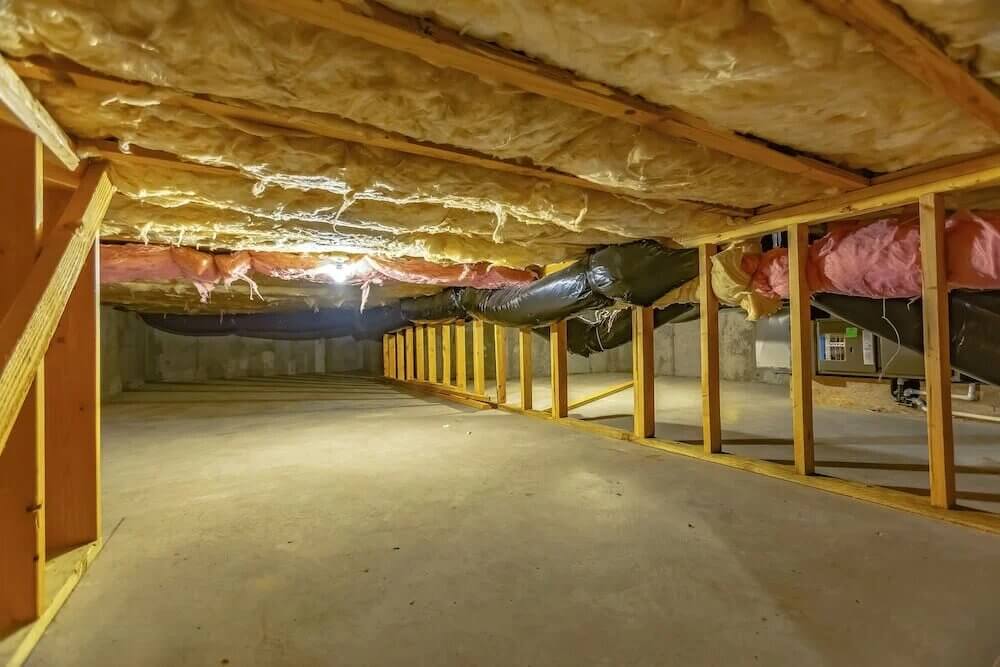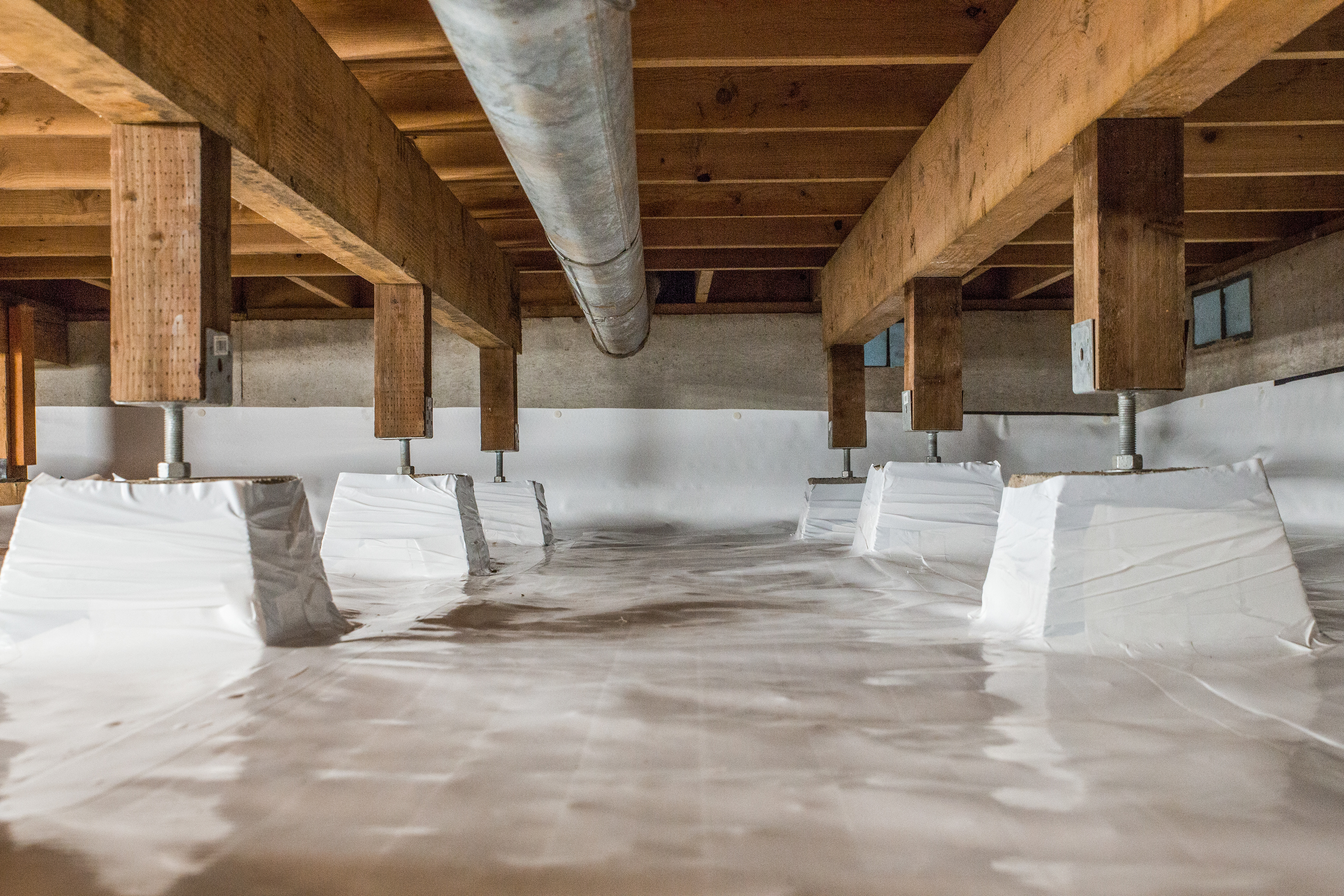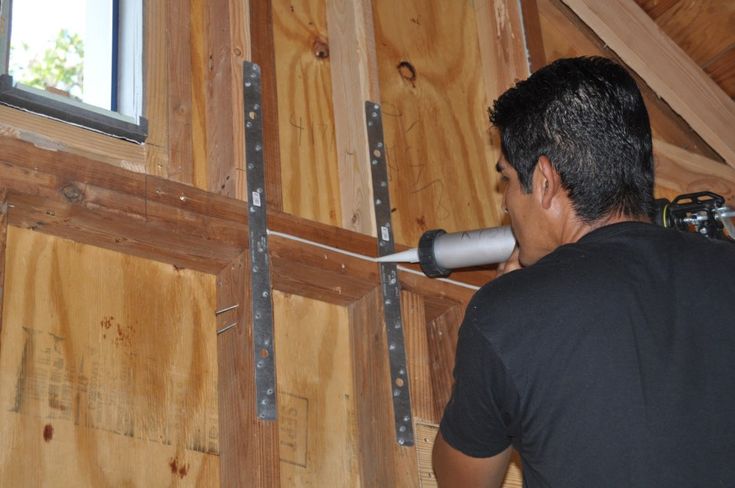
Homes with unsealed crawl spaces often face issues such as moisture accumulation, energy loss, and structural deterioration. Addressing these challenges requires a structured approach to crawl space encapsulation and insulation. This methodical process improves indoor air quality, prevents mold growth, and enhances energy efficiency. Homeowners and commercial property managers can benefit from understanding both the techniques and the reasoning behind them.
Understanding Crawl Space Encapsulation
Encapsulation involves sealing a crawl space to create a controlled environment that limits moisture infiltration and air leaks. This process is vital for homes with humid basements or moisture-prone foundations.
What Encapsulation Entails
Encapsulation typically includes installing a vapor barrier, sealing vents, and closing gaps around plumbing and electrical entries. This reduces humidity levels and prevents water vapor from entering the crawl space, protecting the structure from wood rot and mold.
Signs That Encapsulation Is Needed
- Persistent musty odors
- Visible mold or mildew
- Warping of wood beams or flooring
- High indoor humidity
- Pest infestations
Identifying these indicators early allows for timely intervention and improved long-term performance of insulation.
Types of Crawl Space Insulation
Proper insulation complements encapsulation by stabilizing temperature and preventing energy loss. Different insulation materials offer distinct advantages and are chosen based on environmental and structural requirements.
Rigid Foam Boards
Rigid foam boards provide consistent thermal resistance and moisture control. They are suitable for walls and floors of crawl spaces that require long-term durability.
Spray Foam Insulation
Spray foam creates an airtight seal while providing high R-value insulation. It can be applied to irregular surfaces, filling gaps that rigid boards cannot reach.
Fiberglass Batts
Fiberglass batts are an economical option but require a moisture barrier to prevent mold growth. They are less effective in damp or poorly ventilated crawl spaces.
Comparison Table: Insulation Materials
| Material | R-Value | Moisture Resistance | Application Complexity | Longevity |
|---|---|---|---|---|
| Rigid Foam Boards | 4–6 | High | Moderate | 20+ yrs |
| Spray Foam | 6–7 | Very High | High | 25+ yrs |
| Fiberglass Batts | 2.9–3.8 | Low | Low | 15–20 yrs |
This comparison highlights trade-offs for each method, helping homeowners make informed choices aligned with energy efficiency goals.
Step-by-Step Crawl Space Encapsulation Process
A methodical approach ensures long-term benefits and minimizes structural risk. The following steps guide effective implementation.
Inspection and Assessment
The process begins with a thorough inspection of the crawl space. Key factors include moisture levels, foundation cracks, pest presence, and existing insulation conditions.
Cleaning and Preparation
Removing debris, old insulation, and mold-contaminated materials is critical. Surfaces must be clean and dry before encapsulation begins to prevent future issues.
Vapor Barrier Installation
High-quality polyethylene sheets are installed across the floor and up the walls, overlapping seams and sealing edges with specialized tape. This creates an airtight barrier against soil moisture.
Sealing Vents and Openings
All air vents and structural gaps are sealed to prevent outside air from entering. This stabilizes crawl space temperature and improves HVAC efficiency.
Insulation Application
Once encapsulation is complete, insulation is applied to walls or floors as determined by material choice. Spray foam or rigid boards are preferred for maximum air sealing and thermal protection.
Benefits of Crawl Space Encapsulation and Insulation
Encapsulation and insulation provide measurable improvements in home performance, comfort, and structural longevity.
Energy Efficiency
Properly sealed and insulated crawl spaces reduce heat loss in winter and prevent heat gain in summer. HVAC systems operate more efficiently, resulting in stable indoor temperatures.
Moisture and Mold Control
Sealing crawl spaces prevents groundwater or condensation from accumulating. This mitigates mold growth and preserves wooden structures from decay.
Indoor Air Quality
Crawl space encapsulation prevents allergens, dust, and spores from entering living spaces. This is particularly important for households with respiratory sensitivities.
Structural Protection
Maintaining a dry, insulated crawl space protects floor joists, support beams, and foundation walls, reducing long-term repair needs.
Common Challenges and Solutions
Even with proper encapsulation techniques, certain challenges may arise. Understanding them allows for proactive management.
Moisture Intrusion from Groundwater
In areas with high water tables, additional drainage solutions such as French drains or sump pumps may be necessary before encapsulation.
Pest Infestations
Sealing gaps and using treated insulation materials can reduce pest activity. Regular inspections ensure infestations are identified early.
Improper Installation
Substandard encapsulation may trap moisture rather than prevent it. Using professional-grade materials and following a methodical process ensures reliable results.
Conclusion
Crawl space encapsulation and insulation are essential for maintaining energy efficiency, structural integrity, and indoor air quality in residential and commercial properties. A methodical approach—starting with inspection, followed by cleaning, vapor barrier installation, vent sealing, and appropriate insulation—maximizes long-term benefits. Choosing the right insulation material, monitoring moisture levels, and relying on expert insulation services ensures durability and performance.
Properly executed encapsulation stabilizes indoor temperatures, reduces energy costs, and minimizes the risk of mold or wood deterioration. Homeowners and property managers who understand the process can protect their investments while improving comfort and health outcomes. Taking a strategic, informed approach results in reliable, lasting improvements for any property with a crawl space.
FAQs
What materials work best for crawl space vapor barriers?
High-density polyethylene sheets provide effective moisture resistance. Overlapping seams and properly sealing edges ensure a complete barrier.
How does crawl space insulation improve energy efficiency?
Insulation reduces heat transfer between the ground and living spaces. Properly sealed insulation decreases HVAC workload and maintains stable indoor temperatures.
Can encapsulation prevent mold growth entirely?
While encapsulation significantly reduces moisture, ongoing monitoring and proper drainage are essential to prevent mold entirely. Moisture management is key.
Is spray foam better than rigid foam for crawl spaces?
Spray foam provides superior air sealing and insulation, especially for irregular surfaces. Rigid foam boards offer a durable option with moderate application complexity.
How often should a crawl space be inspected after encapsulation?
Annual inspections are recommended to check for moisture, pest activity, or damage to insulation and vapor barriers. Early detection prevents costly repairs.
Reviewer: Ava Clark shared her input based on 6 years of working with spray foam insulation teams. Her focus on customer trust and communication helped shape key parts of this post.







